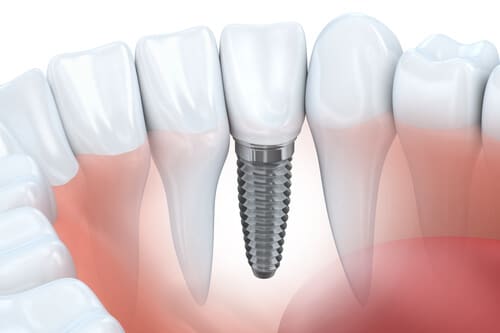Lost a tooth? You don’t have to live with a gap in your smile anymore! With dental implants, you can get back your confidence in no time. Dental implants offer a permanent solution, as they replace the root of your lost tooth and are designed to last for years.
What are dental implants?
Our implants are surgically inserted and designed to be as durable and long-lasting as your own teeth. Dental implants are designed to look, feel and function like natural teeth, so you can get back to living life without worry. Plus, with custom-made crowns that match the color of your own teeth, nobody will ever know that you have implants! Get ready to smile confidently again with dental implants from What are Dental Implants.
Types
There are two types of dental implants: Endosteal & Subperiosteal.
Endosteal implants are embedded deep in your jawbone, providing a secure and natural-looking foundation for single or multiple artificial teeth. And for those who don’t have as much jawbone height, Subperiosteal implants are affixed on top of your existing jawbone, giving you a more comfortable & efficient solution.
Safety
According to the American Academy of Implant Dentistry, around 3 million people in the United States have dental implants, and this number increases by about 500,000 every year.
Get the peace of mind you deserve with Safety Implant! Our innovative dental implant technology is designed to offer safe, secure, and reliable dental restoration for millions of people. Our implants are installed by experienced and qualified surgeons, making sure your jawbone is healthy and stimulated for optimal growth.
Risks
Some people are not eligible for dental implant surgery. It is not safe for dental surgeons to operate on people with:
- acute illness
- uncontrollable metabolic disease
- bone or soft tissue disease or infection
If these issues are resolved, a person can have surgery.
In some cases, dental surgeons refrain from operating on people with:
- heavy smoking habits
- parafunctional habits, such as tooth grinding or clenching
- behavioral or psychiatric disorders
- HIV
- diabetes
- osteoporosis
- AIDS
If people with any of the above undergo dental implant surgery, there is a higher risk of the implant failing.
Dental surgeons may also choose not to operate on people undergoing the following treatmentsTrusted Source, due to an increased risk of implant complications:
- bisphosphonate drug treatment for bone loss diseases
- chemotherapy
- radiation therapy of the head or neck
Potential complications of implant surgery
People who undergo this procedure may experience complications during or afterward. The issues may include:
- Nerve damage can cause an altered sensation in the area affected by surgery.
- An opening of the incision following surgery may occur and may require a revision procedure.
- Movement of the implant is possible and can affect both stability and aesthetic outcomes.
- Exposure of the implant above the gumline can lead to further complications such as infection or inflammation.
- Infection of the implant can cause pain, swelling, and discomfort.
People who experience movement or exposure of the implant may need to undergo additional procedures to improve the health of the bone and gums or remove or replace the implant.
The following are some signs and symptomsTrusted Source that an implant placement has been unsuccessful:
- the implant is excessively mobile
- pus or other secretions come from the site
- pain when tapping the implant
- rapid, progressive bone loss
Procedures
Dental implant surgery is tailored to your individual needs and preferences, taking into account factors like age, health, lifestyle, and more…
- the number of teeth requiring replacement
- the location of the implants within the jaw
- the quality and quantity of bone at the implant site
- the person’s underlying oral and systemic health
Depending on these factors, additional procedures may be necessary. These can include:
Sinus augmentation
Placing an implant in the upper jawbone is usually difficult because of the location of the sinuses.
Sinus Augmentation is designed to lift the floor of the sinuses so that you can receive dental implants, making it easier for your surgeon to place them. With Sinus Augmentation, more bone maybe able to develop so that the implantation can be successful.
Ridge modification
Ridge Modification may also be needed when getting a dental implant. This procedure involves lifting your gum to expose the deformed area of the jawbone and use either a bone or bone substitute to build up and repair the area, giving you a secure fit for dental implants.
Cost
The cost of dental implant surgery varies, and the following factors can influence it:
- the number and types of implants required
- the location of the implants within the jaw
- whether there is a need for any additional procedures to prepare the mouth for surgery
A dentist or another oral health professional can estimate the cost of dental implant surgery during an initial examination.
Some dental insurance policies cover a larger portion of the cost.
Other tooth replacement options, such as bridges or dentures may be less expensive. However, Dental implants in most cases provide longer-term benefits especially if a person takes care of them well.
Summary
Dental implants are fixtures in the bone that replace missing teeth. Implants have a high success rate and can provide long-term benefits.
Some people need additional procedures to prepare their mouths for dental implants. These will add to the overall cost. The number and type of implants required can also raise the cost.
Lastly, if you think dental implants are right for you, the team at Santa Clarita Family Dental will be able to help you with your implant journey and create a smile you would be proud to show of.

